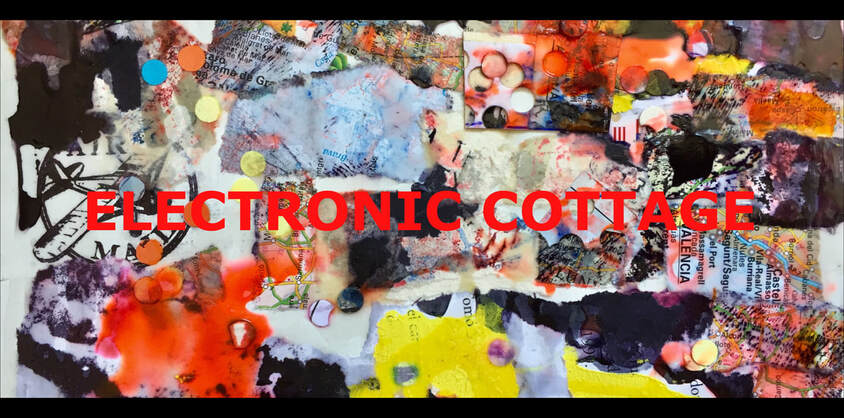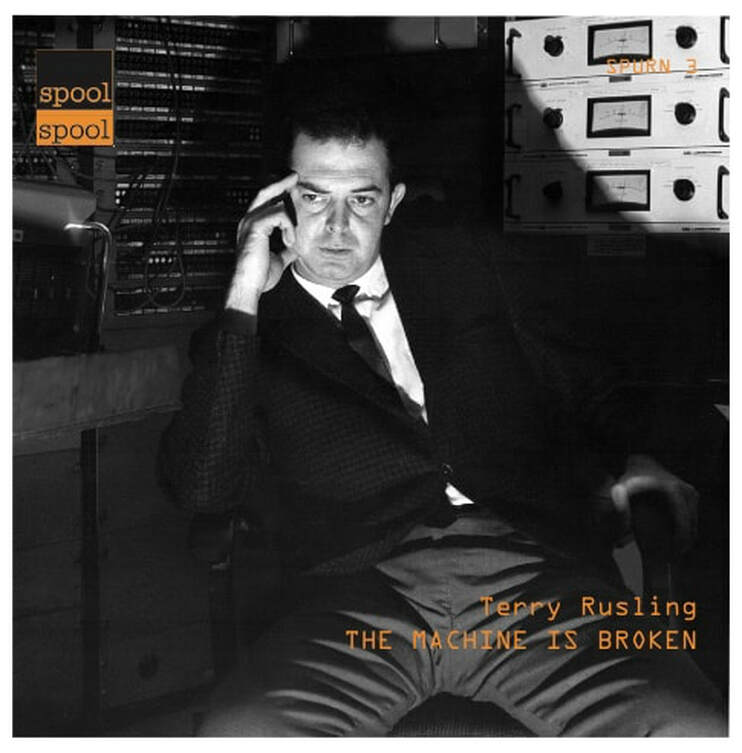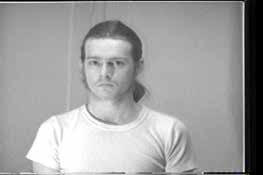|
I have been working for about a year with my friend David Porter to release a CD documenting the electronic composer Terry Rusling. He was influential to both of us and gave us three or four Deutsche Grammofon Avant Garde sets and encouraged our pursuits in music and visual art. We have spent the last year going through all his tapes and have released a CD of his music on my label Spool. Terry Rusling was a Canadian composer of electronic music. He also worked as an engineer for the Canadian Broadcasting Corporation (CBC).
Several of his works, including The Trains (1966), a piece of musique concrète, were broadcast on the CBC. Other projects included a CBC Radio program combining Rusling’s music with Earle Birney’s sound poetry. After the piece was performed they discussed their personal approaches to their art forms. A related collaboration with poet Gwendolyn MacEwen, combining poetry with electronic music, was also broadcast on CBC Radio. In another project, Rusling worked with English performance artist and sound poet Bob Cobbing. He composed incidental music for CBC Radio shows including an electronic theme for the CBC nightly television news and incidental music for TV shows, including the series Telescope; in particular, an episode on Marshall McLuhan (1967). His scores were submitted to John Cage’s Notations project and two items are included in Cage’s book. They demonstrate Rusling’s use of graphic notation.
8 Comments
Leslie Singer
1/26/2019 22:45:51
DK, thanks so much for posting this piece about Terry Rusling. Very interesting! I look forward to hearing more and will check out the Spool release.
Reply
Rafael González
1/27/2019 05:56:20
Thank you very much! I didn’t know him!
Reply
1/28/2019 10:54:08
I know it was a lot of work putting this together, glad to see it's available now! Congrats, DK!
Reply
Gregor Meyer
7/15/2019 10:37:11
Many thanks for releasing this excellent CD! A shame more people don't know his name, as the music on this disc is some of best electronic music of the era.
Reply
Gregor Meyer
7/15/2019 10:40:48
I was also curious if it would be possible to post the years of composition for each of the pieces on the disc? Wikipedia list some titles with corresponding years but not all.
Reply
Daniel Kernohan
3/28/2022 13:31:02
When I first published this page there were very few dates available. I managed to track down a few since in various archives and by contacting people still alive who had some documentation. This continued until I tracked done an old friend who was Terry's nephew. I knew he had inherited Terry's tape collection. Eventually he was found and a few years ago we went through the tapes which included interviews on CBC mostly. I also contacted a number of places he had worked after he was given a Canada Council travel grant which allowed to work in various studios in Canada, USA and Europe. He spent a fair bit of time at University of Toronto's famed studio where Hugh LeCaine instruments were installed. The current Wikipedia page for Rusling shows a year by year list of compositions. Even after listening to interviews and contacting other composers who had worked at U of T like Pauline Oliveros, the page shows as much detail as we could track down. Hugh Davies book International Electronic Music Catalog is the best source I could find for dates and places many electric composers worked as well as pieces created.
Reply
7/17/2019 19:11:49
With regard to dates: The reason we were not able to supply dates for many of the compositions is due to existing available documentation. My first research after I came upon Hugh Davies, International Electronic Music Catalog which shows dates for many if not most of the electronic composers working at the time. The compositions Rusling made that were documented at the time are in that book. Rusling worked primarily at University of Toronto Electronic Music Studio which featured many of Hugh LeCaine's instruments. He also worked at the Canadian Broadcasting Corporation and did some composing there though his primary job was as a technician. When he got his Canada Council travel grant he worked in studios at the University of Southern Illinois, University of Rochester and in studios in Europe like BBC Radio Workshop and with Stockhausen in Cologne amongst other studios. After that he worked primarily at University of Toronto and CBC.
Reply
Daniel Kernohan
3/28/2022 13:33:52
Sorry about the duplication above. Somehow I didn't see my earlier reply. Webmaster, please feel free to remove second reply.
Reply
Leave a Reply. |
dkI started doing experiments with tapes around 13. Me and some friends heard Firesign Theatre on the radio and attempted to make our own comedy on a portable cassette deck. A year after we got into reel to reel and into bands. Our band went from the blues to prog rock over 3-4 years. All the time me and my buddy Dave kept trying stuff on reel to reels. We were both visual artists but we were also in a rock band. Our musical tastes evolved to include free jazz and experimental music. My friend’s uncle had been an experimental composer who worked as an engineer at the CBC. He supported our interest in visual art but he also introduced us to avant garde music. He gave us 3 or 4 sets from the Deutsche Grammofon Avant Garde series. We started trying to do Stockhausen with household items, sewing machines, pots and pans, portable cassette decks. We all went to art school. I saw Cornelius Cardew perform, with students, a section of the Great Learning. After that was over he then rejected that music as bourgeois and then performed some of his Maoist folk songs at the piano. We also saw David Tudor’s Rainforest. He came and worked with the music students and they built it with him. When I was at York University, Richard Teitelbaum and David Rosenboom were on the music faculty. I took visual arts. The leader of the foundation course was George Manupelli. He was a member of the Once Group from Ann Arbor. He brought Robert Ashley as a guest and he performed during our mass lecture. Because I had already started doing pieces using sound and performance, my graduate TA introduced me to Ashley and he politely listened to one of my early experiments. Archives |



 RSS Feed
RSS Feed